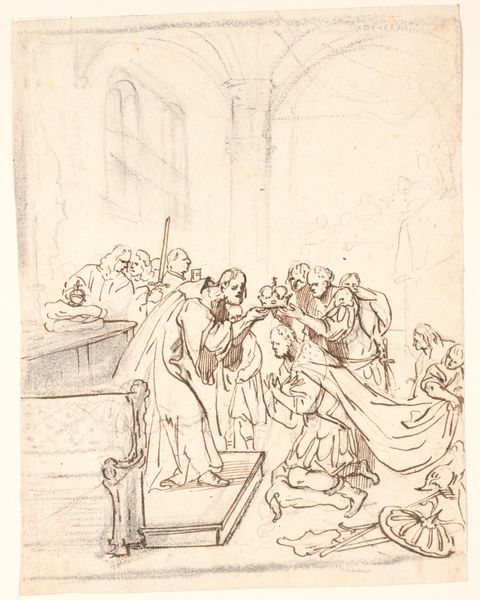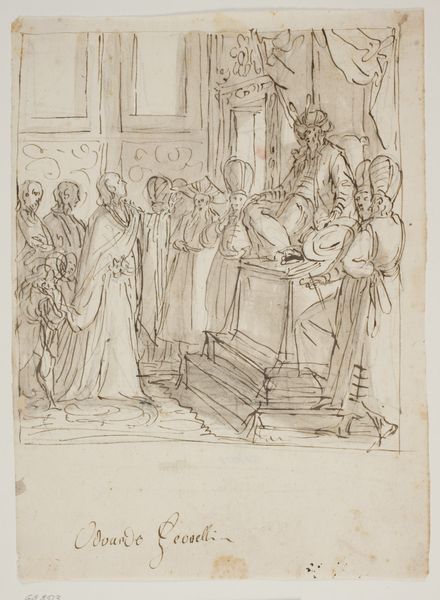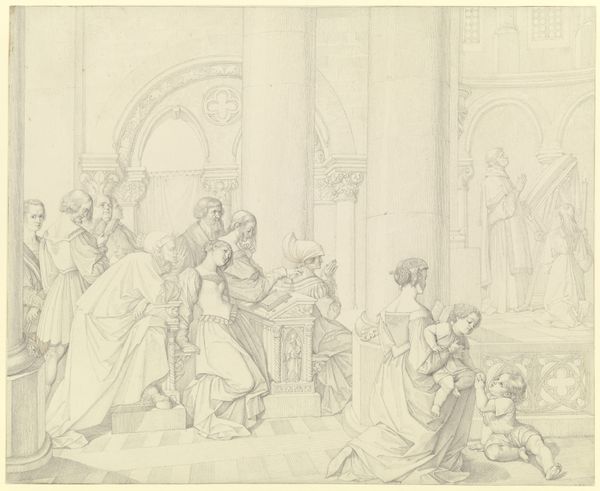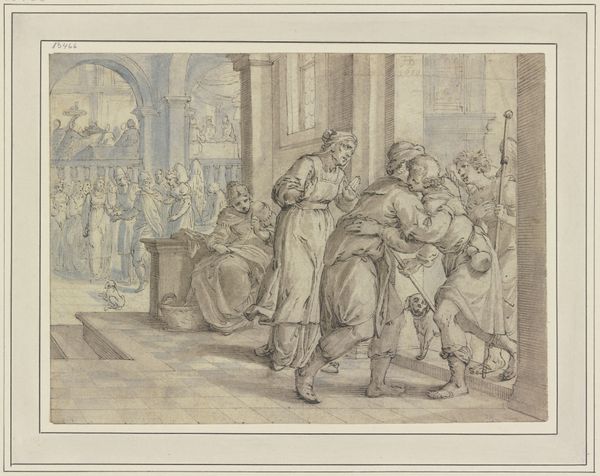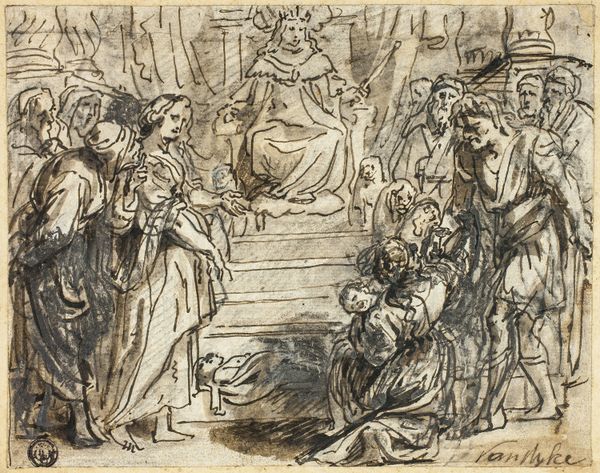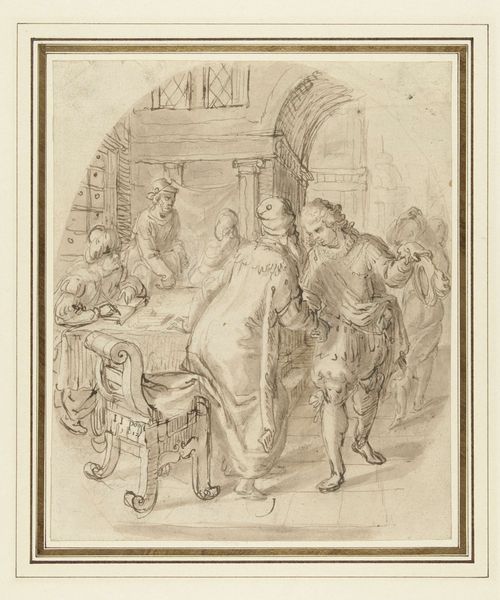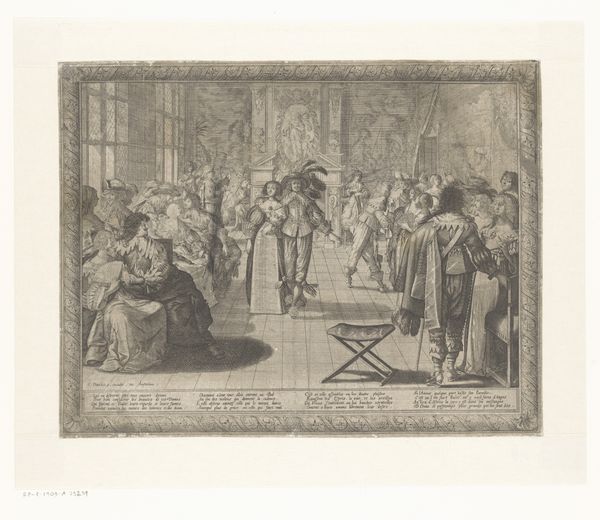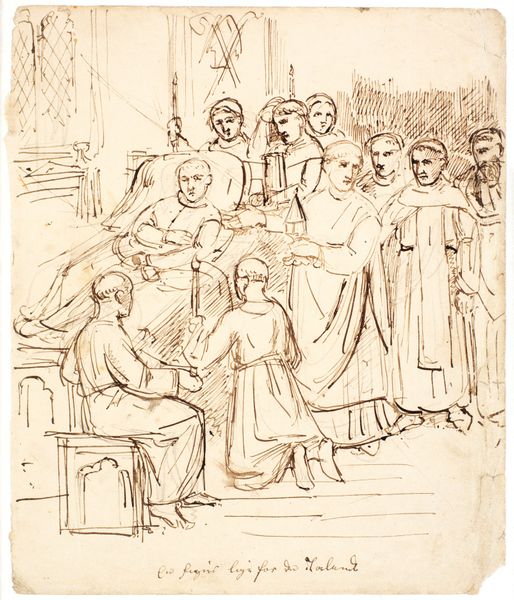
An ambassador of the Barbarigo family received in audience by a king. Study for a fresco in Villa Barbarigo, Noventa Vicentina 1556 - 1629
0:00
0:00
drawing, paper, ink, pen
#
portrait
#
drawing
#
toned paper
#
light pencil work
#
narrative-art
#
pen sketch
#
pencil sketch
#
figuration
#
paper
#
11_renaissance
#
personal sketchbook
#
ink
#
sketchwork
#
ink drawing experimentation
#
pen-ink sketch
#
sketchbook drawing
#
pen
#
history-painting
#
italian-renaissance
#
sketchbook art
Dimensions: 209 mm (height) x 202 mm (depth) (bladmaal)
Editor: This pen and ink drawing from the late 16th or early 17th century by Antonio Aliense is titled "An ambassador of the Barbarigo family received in audience by a king. Study for a fresco in Villa Barbarigo, Noventa Vicentina." The composition and sketch-like quality make me wonder: What can you tell me about the public role of preparatory drawings like this one? Curator: Well, it’s fascinating to consider how this drawing functioned within a system of patronage and artistic production. Frescoes in villas like the Barbarigo's were not simply decoration; they were powerful statements about wealth, lineage, and political influence. Consider the setting - a royal audience. What does staging such an event in art communicate to its viewers? Editor: That the family had influence, connections to power? That their story was important enough to be told? Curator: Precisely. Aliense's drawing is a study, a stage in visualizing and solidifying that message. It served as a proposal, a negotiation between the artist, the patron, and the political realities of the time. The “sketchwork,” as you called it, would have been reviewed, critiqued, and ultimately approved or rejected based on its suitability to the Barbarigo family’s desired image. It highlights the museum and gallery context and how it shapes perceptions. Editor: So, this wasn't just art for art's sake; it was art functioning within a very specific social and political context. How much input would the family likely have had in the composition? Curator: Considerable. Families commissioning frescoes at this time often had very clear ideas about how they wished to be represented. The artist had a vision, of course, but ultimately the patron dictated the overall message. Considering it in this way underscores that art does not emerge in a vacuum, instead coming forth in a specific milieu. I never really looked at Renaissance drawing this way, so that's useful to learn! Editor: I agree! Thinking about art as a collaborative process between the artist and patron offers a great amount of historical insights!
Comments
No comments
Be the first to comment and join the conversation on the ultimate creative platform.
